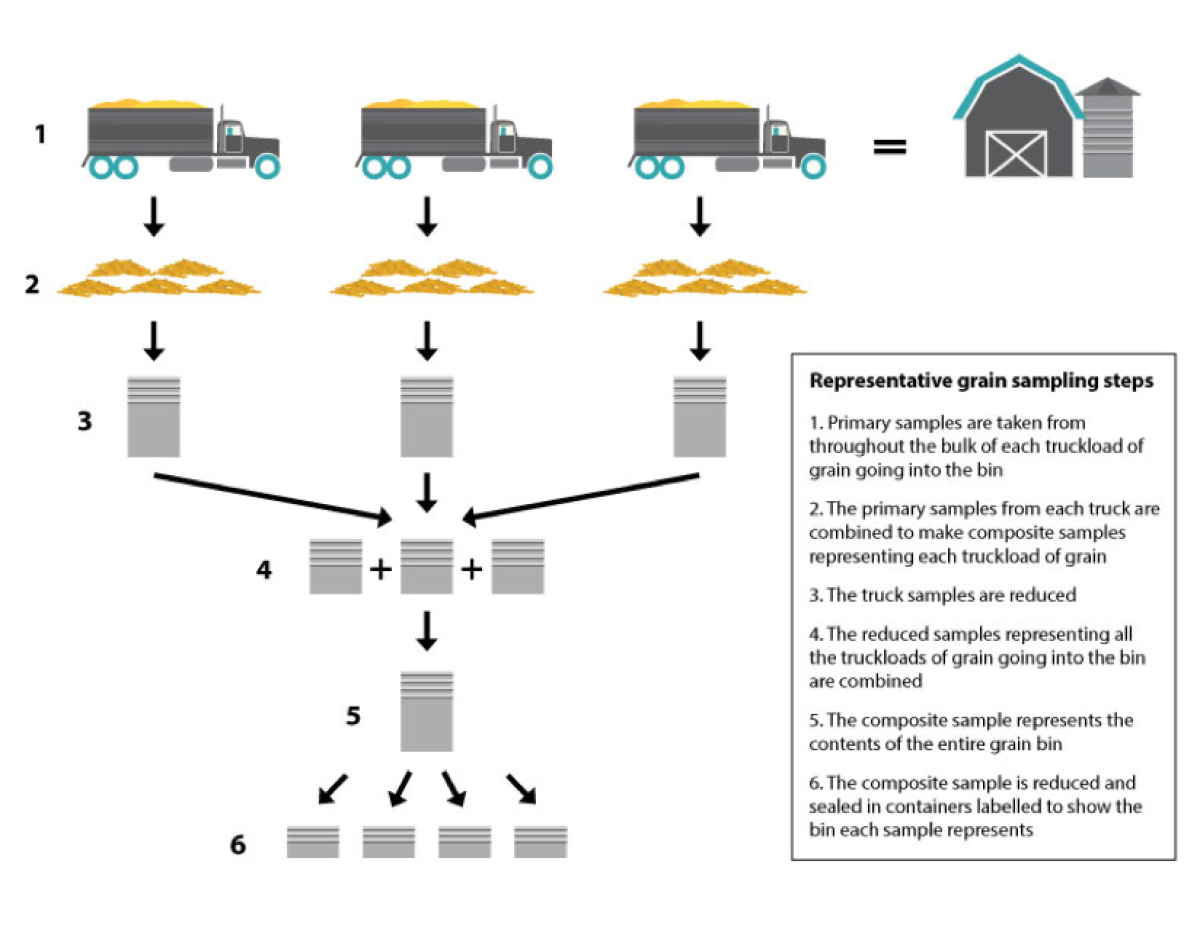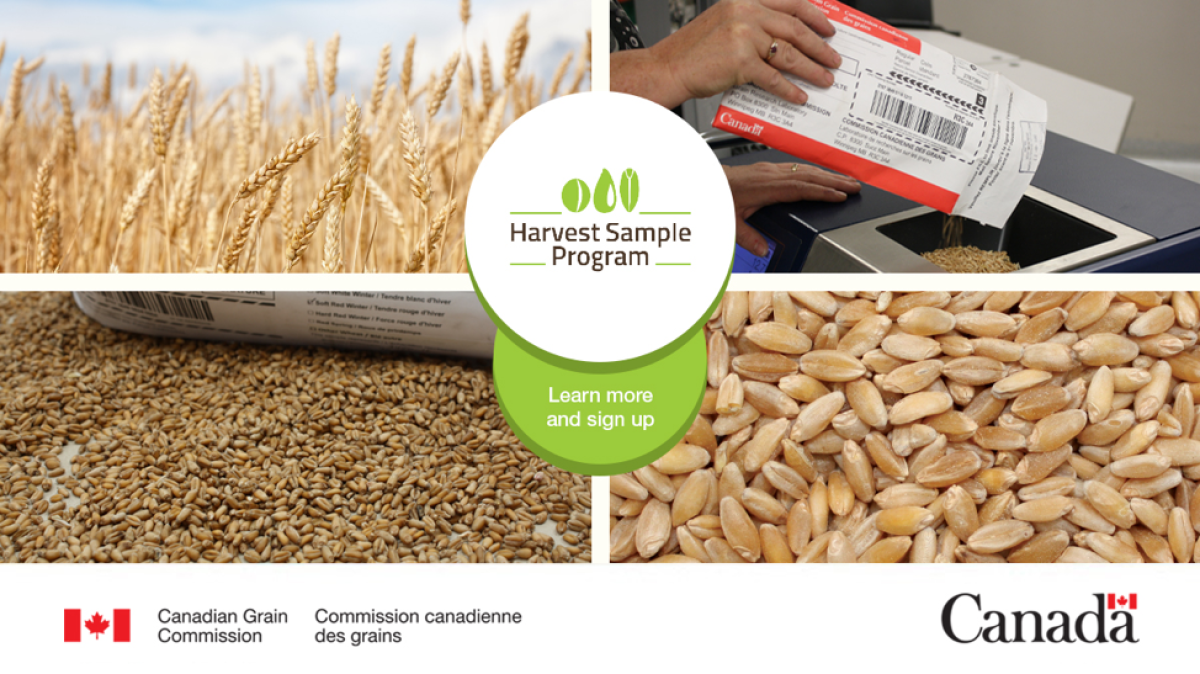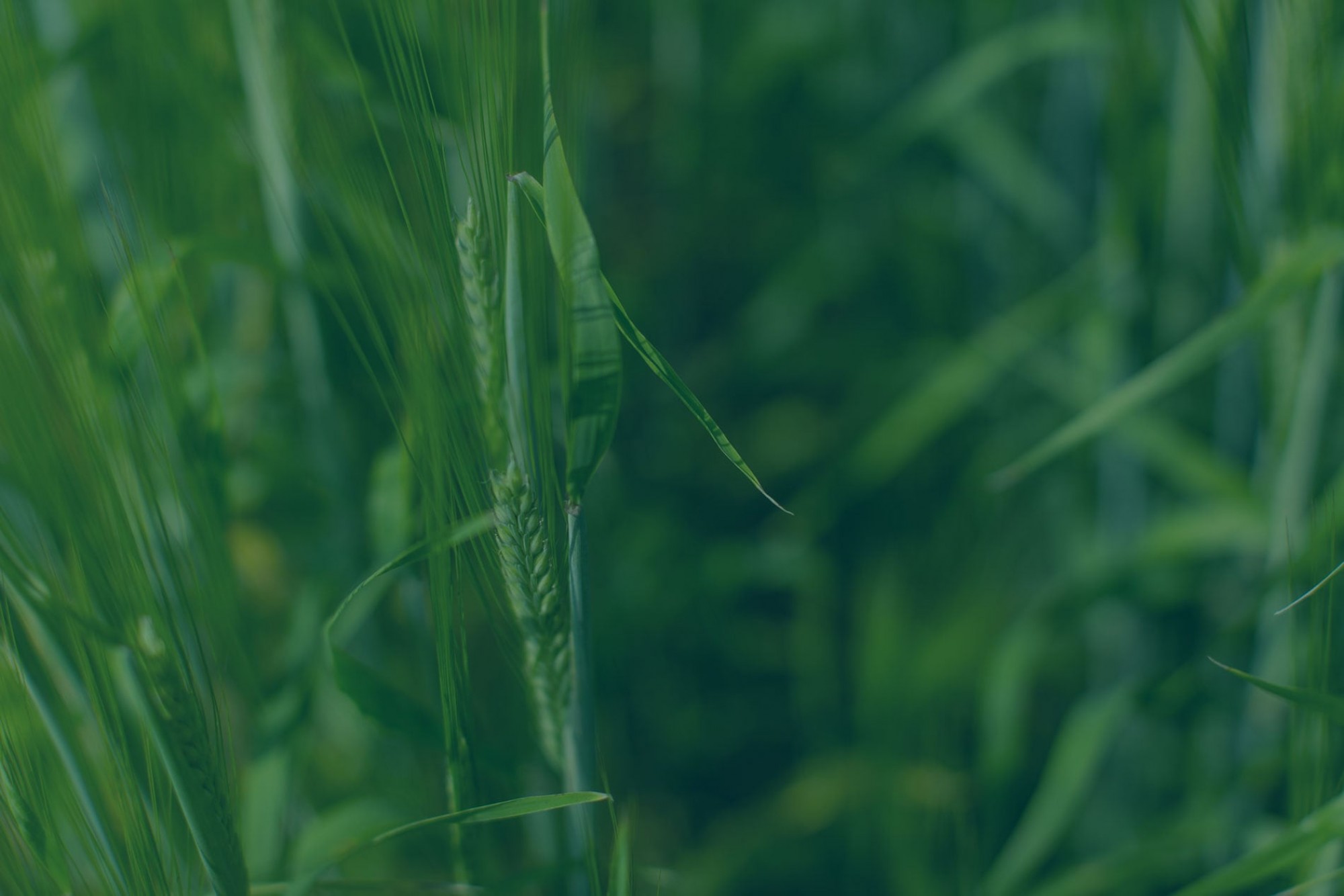Why testing your grain brings many benefits
Whether selling the grain to the elevator or using them as seed next year, testing grain is a low-cost practice that brings huge benefits. This article will look at sampling tips, testing labs, information gained through grain/seed testing, and potential decision-making.
Grain Testing
If the grain is destined for the elevator, testing a representative sample will provide information on grain quality. The information includes:
- Test weight
- Thousand kernel weight
- Grain protein content
- Milling and baking quality
- Falling number (indication of pre-harvest sprouting)
- Fusarium damaged kernel (FDK) and/or Deoxynivalenol (DON) if FHB was a concern
Using the information, one can make more informed decisions about grain storage, on-farm use, and selling to markets.
Grain Sampling
Test results are only as good as the sample. Taking a representative sample is the crucial first step. Many factors contribute to the variability of grains. Grain size and weight may differ due to field variability. In addition, grain separation and stratification can occur during transport, loading, and unloading.
A few sampling methods to obtain a representative sample:
1) Hand scoop - manual stream sampling: this is the most straightforward and easily adopted method. It is also the most common method during harvest. One can use hand scoops with consistent intervals between samples to ensure representativeness.
2) Pneumatic truck probe – manually controlled: this method uses a pneumatic truck probe sampling system to sample truck conveyance. Proper installation and adjustments are required.
3) Double sleeve trier – manual static sampling: utilize a double sleeve trier made of brass or aluminum to sample static grain in sacks, totes, or bulk.
Refer to this document for more information: Guide to Taking a Representative Sample

Figure 1. Diagram of representative grain sampling steps. Diagram credit: Canadian Grain Commission
Ensure the samples are sufficiently dry before storing them in a bag. Store grain samples in clearly labelled plastic bags with information such as, but not limited to:
- Farm name
- Origin field
- Quantity represented
- Variety
- Sampling date
If not shipped immediately, store samples in cool, dry conditions with rodent-proof containers. Do not leave samples in hot vehicles for extended periods.
Testing labs
1) Harvest sample program – Canadian Grain Commission
The Harvest Sample Program is a voluntary program provided by the Canadian Grain Commission (CGC). When you sign up, you’ll annually receive a Harvest Sample kit that contains envelopes for sending in samples of your crop. For testing results, producers receive a personalized crop quality report at no charge that they can use when marketing and delivering their grain.
If interested, please sign up to participate by November 13, 2024
During peak season, one can expect to receive grain grading results within 10 business days of CGC receiving the sample. For all the information, including DON and falling number, allow up to 20 business days.
The harvest sample program compiles each year’s grain testing data into reports like Quality of Canada Western Red Spring wheat in 2023. These reports provide valuable information on year-specific grain quality and overall trends. They benefit farmers, researchers and industry alike.
To learn more and to sign up, visit grainscanada.gc.ca/hsp.

2) SGS – Grain Quality Services
SGS analyze grain samples following CGC-approved guidelines. For wheat and barley growers, they provide grain export services, or the issuance of Phytosanitary Certificates, required for exporting grains.
Seed testing
If the harvested grain is destined to seed, sending a sample to seed labs can provide information on:
- Germination
- Vigour
- Thousand kernel weight
- Seed-borne diseases, such as FHB or Bacterial Leaf Streak (BLS)
Seed Sampling
Similar sampling process and precautions as sampling for grain quality testing. Make sure to obtain a representative sample of the field/load.
Testing labs
1) 20/20 Seed Labs - Nisku
20/20 Seed Labs have plenty of options for seed testing. For cereals, the labs provide tests on:
- Germination
- Vigour
- Thousand kernel weight
- Seed qualities: moisture, protein, bushel weight, etc.
- Disease diagnosis: ergot, Fg, bacterial leaf streak and smut
- DNA testing: Fg, midge refuge test and more
- Seed purity: quantify weed seeds, other crops, etc.
Visit the 20/20 Seed Labs website for test packages and sampling tips.
2) SGS – Seed Quality Control Services
In Alberta, SGS Seed Lab is located in Sherwood Park and Grande Prairie. The lab provides testing in:
- Germination and physical purity
- Seed health and viability
- Seed pathology
- Wheat midge refuge testing
3) Precision Seed Testing – Beaverlodge
Lab scope of accreditation:
- Purity
- Germination
4) Seed Check Technologies Lab – Leduc
Lab scope of accreditation:
- Purity
- Germination
For a complete list of accredited seed labs in Canada, click here.
Got your results back? Read this article on How to interpret your seed test results - a step-by-step guide.

